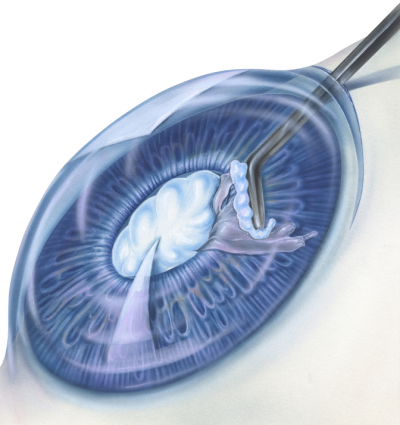Plain and simple, cataracts affect your vision. People over age 60 typically begin to notice cataracts affecting their vision, but most people never know whether they have a cataract because there are no symptoms in the early stages. Because of this, many patients are left wondering, “What do cataracts look like? Can I see a cataract when I look in the mirror?”
Cataract Symptoms
 Most people can neither see nor feel a cataract. For this reason, vision exams on an annual basis are important as these exams are often the earliest detection for a cataract. However, there are symptoms, which include the following:
Most people can neither see nor feel a cataract. For this reason, vision exams on an annual basis are important as these exams are often the earliest detection for a cataract. However, there are symptoms, which include the following:
- Blurred vision
- Sensitivity to lights or glare
- Changes in eyeglass prescription are more frequent
- Need for a brighter reading light
- Poor vision at night
- Colors that appear yellowed or faded
Cataract Causes
Cataracts are not a disease. Instead, cataracts are caused by a natural aging process in which proteins in the eye break down and clump on the lens. Most people have started forming cataracts by age 60.
Cataracts can form in one or both eyes, and by age 75, cataracts may be creating significant vision interference. The protein buildup clouds vision and scatters light, so it is more difficult to read and drive at night. In fact, these are the first two problems our Elmquist patients notice. They often describe their vision as “looking through a dirty window.”
While cataracts cannot be prevented, wearing protective sunglasses that block UVA and UVB rays can slow both the onset and progression of cataracts.
Treatment
Eventually, surgery is needed to repair the cataract. At Elmquist, we perform this safe and effective procedure on an outpatient basis right in our state-of-the-art medical facilities in Fort Myers and Cape Coral.
Often by age 80, most patients will have a significant cataract and elect to have the procedure. Doctors remove the cloudy lens and replace it with a lens implant called an intraocular lens (IOL). Over the last 50 years, these lenses have become very specialized, and we can choose a lens to correct nearsightedness, farsightedness or even astigmatism.
You may not need surgery right away. We will work with you to adjust your eyeglasses or contact lens prescription more frequently to your changing vision caused by the cataract progression. This works for a while, but surgery is eventually needed.
Early detection of cataracts is key. Left untreated, cataracts lead to blindness; the condition is the leading cause of blindness in the world today. Fortunately, cataracts are very treatable and the surgery is one of the safest surgeries performed today.
What do cataracts look like? Cataracts often have no symptoms and cannot be seen when looking in a mirror. As such, cataracts often go undetected for many years. Come to Elmquist Eye Group for an annual comprehensive vision exam, often the only way a cataract is detected. Give us a call to schedule your visit.
